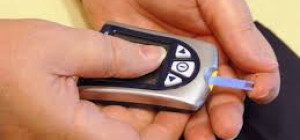 If you have been diagnosed with type 2 diabetes after using the cholesterol drug Lipitor, it’s important to understand how the illness will affect your life. It’s likely to have a major impact on your daily routine and negatively influence your long-term health. Thousands of women who have had the misfortune of suffering Lipitor diabetes side effects now struggle with the disease on a daily basis.
If you have been diagnosed with type 2 diabetes after using the cholesterol drug Lipitor, it’s important to understand how the illness will affect your life. It’s likely to have a major impact on your daily routine and negatively influence your long-term health. Thousands of women who have had the misfortune of suffering Lipitor diabetes side effects now struggle with the disease on a daily basis.
Lipitor is manufactured by Pfizer. Studies dating back to 1994 have linked its use to new-onset diabetes. Pfizer didn’t disclose the risk until 2012, when the U.S. Food and Drug Administration forced it to update its safety label. The company’s lack of disclosure exposed countless women to a serious illness for which there is no known cure.
Here's a list of ten things you should be doing, if you're living with Lipitor diabetes side effects:
1. Ongoing Need to Monitor Your Blood Glucose Levels
Once you’ve been diagnosed with the illness, you’ll need to check your blood glucose levels throughout the day. This is one of the keys to managing your condition. Keep a log and report large spikes and drops to your doctor.
2. Strict Adherence to A Lipitor And Diabetes-Friendly Diet
It’s important to plan your meals around healthy, nutritional foods that won’t aggravate your condition. Meals filled with fruits, vegetables, healthy fats, whole grains, and lean meats will prevent sharp rises in your glucose levels.
Don’t skip meals. Space them throughout the day and stick to a consistent schedule, even if doing so is inconvenient.
3. Coordinate Your Exercise with Your Glucose Levels
Physical activity uses up glucose. Although that can be good if you’re suffering from Lipitor and diabetes side effects, it can also lead to hypoglycemia (low blood sugar). You’ll need to design a workout schedule that doesn’t cause your glucose levels to drop too low.
4. Learn To Give Yourself Daily Insulin Injections
If you’re not taking oral medications for your illness, you’ll probably need to self-administer daily insulin injections. Some diabetics need 3 or 4 injections per day.
You can learn to use a syringe or opt to use an insulin pen. It’s also important to store the insulin properly to prevent it from going bad.
5. Regularly Check the Health of Your Feet
You’re likely to lose some sensation in your feet due to lack of blood flow and nerve damage. Both are common in diabetics. Unfortunately, a lack of sensation means cuts and scrapes can easily go unnoticed. That makes your feet especially prone to infection.
After you’re diagnosed with diabetes, get into the habit of checking your feet each day. Look for callouses, skin changes and open wounds.
6. Have Eye Examinations Performed Each Year
As a diabetic, you’ll be vulnerable to eye problems. The illness puts you at greater risk for developing glaucoma, cataracts and disorders of the retina. Have your eyes examined by an ophthalmologist at least once a year. That way, serious problems can be addressed before they cause partial or total blindness.
7. Deal with Periodic Bouts Of Hypoglycemia
I mentioned hypoglycemia earlier in the context of creating an exercise program that avoids triggering it. But low blood sugar can happen for a variety of reasons. For example, you might take too much insulin or inadvertently skip a meal.
If you feel lightheaded, nauseous, anxious, or develop chills or sudden sweating, it could mean that your glucose levels have dropped too low. Take immediate steps to raise them. Severe cases can lead to seizures and blackouts.
8. Take Medications to Help Manage Your Illness
Advanced cases of the disease often warrant the use of select medications. They range from over-the-counter drugs, such as aspirin, to a variety of prescription drugs.
Depending on your condition, your doctor might prescribe medications to stimulate insulin release from your pancreas or lower glucose production in your liver. He or she might also recommend drugs to help your body to make more efficient use of the glucose in your bloodstream. These and other drugs are not only an inconvenience, but also pose their own side effect risks.
9. Schedule Routine Doctor Visits to Report Progress
Diabetes requires routine doctor visits. Schedule them every six months. Your doctor will inquire about changes in your blood glucose levels and offer advice on how to control them. He or she will also test your blood pressure and cholesterol levels, and take blood tests to check your A1C and eAG numbers.
Regular testing is important to manage your condition.
10. Consider Filing a Lipitor Lawsuit for Compensation
Type 2 diabetes can have a tremendous effect on your life. Besides making drastic lifestyle changes and maintaining vigilance to manage the condition, you’ll be exposed to an ever-present risk of serious health issues. The longer you have diabetes, the greater the likelihood you’ll suffer health complications.
Studies have shown that Lipitor and diabetes in women can trigger an array of serious side effects, some of which many not be obvious. It’s estimated that half of all diabetics experience nerve damage. About 40-45% of diabetics experience some degree of damage to the blood vessels in the retina. If you experience any noticeable complications, promptly consult your doctor.
If you were diagnosed with diabetes while using Lipitor, consider contacting an attorney. You may be eligible to file a Lipitor settlement claim. You can hold Pfizer accountable for your injuries, as well as receive compensation for your suffering, lost wages and hospital bills.
The decision to file a Lipitor diabetes lawsuit is yours and yours alone, but news of a Lipitor settlement could alert thousands of women who remain unaware that they may also be victims of Lipitor diabetes side effects.
Shared by http://www.lipitorlawsuitforwomen.com/







